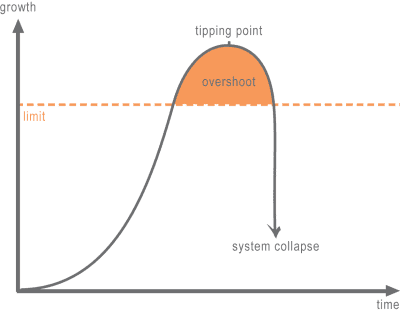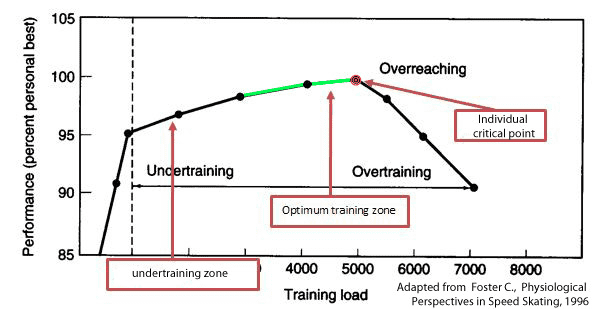I am an avid cyclist, and have also had the privilege of coaching a couple of talented bike racers.
One approach to assessing an athlete (not my preferred strategy) is to set a schedule of ever-increasing training loads. The idea is that the athlete will eventually hit the wall and that you will have established their upper bounds for withstanding the training stress. This approach is similar to a venture capital firm setting a ramped ladder of revenue targets. They expect some of their portfolio companies to “hit the wall” and “crash and burn”, but that’s just how the cookie crumbles.
 The danger here — as with startups — is that a highly motivated person can usually find a way. We are incredibly adaptable, and can push ourselves for many, many months. Overtraining doesn’t creep up linearly. I’ve had cyclist friends dig a hole for years before it caught up with them. The onslaught of fatigue and poor motivation was sudden, and there was no quick fix. It didn’t mean they were untalented cyclists. On the contrary, they tended to be the most talented (and most motivated)
The danger here — as with startups — is that a highly motivated person can usually find a way. We are incredibly adaptable, and can push ourselves for many, many months. Overtraining doesn’t creep up linearly. I’ve had cyclist friends dig a hole for years before it caught up with them. The onslaught of fatigue and poor motivation was sudden, and there was no quick fix. It didn’t mean they were untalented cyclists. On the contrary, they tended to be the most talented (and most motivated)
.
https://statumentis.wordpress.com/2014/12/01/overtraining-is-of-great-importance-to-the-high-performance-athlete-we-need-to-gain-knowledge/Usually, there was some part of the formula that was a bit off. And being truly motivated and hell-bent athletes, they just “pushed through”. The tragedy is that some of these people quit!
To build a long term career (either amateur or professional) the athlete must master:
http://www.pezcyclingnews.com/latestnews/toolbox-jump-in-the-waters-great/These things take time and commitment to perfect. You can get “decently far” without paying too much attention to them, but eventually, you’ll have to pay off the debt. For growing startups, you have similar “skills”:
- Leadership skills
- Ability to attract and retain the best talent
- Strong, resilient culture
- Agility
- Software quality and extensibility
- Managing growing system complexity
- Alignment and a sense of purpose
- Product and UX savvy
- High customer satisfaction As with diet, stress management, and positive psychology, none of these things behave in a linear fashion. You don’t get a lot of notice before the hammer drops. When you hit that bad quarter, you won’t just be able to do first-aid. You will spend a long time paying the price.
The alternative approach is to make these supporting skills first-class citizens. The athlete “trains” their diet, recovery, and psychology. We extend time horizons to ensure that the system is healthy and that they’ll be prepared. We don’t push until we hit (and exceed) the limit, but rather creep up on the limit paying very close attention to the warning signs.
If you’re involved in this Darwinian revenue goal game, try to assess the fitness of your business on a deeper level. Conduct a pre-mortem activity and visualize your first crappy quarter. What happened? And what can you do about it now? I frequently hear VCs say something like:
Well, it’s easy to get to ___________ . Wait until they try to get from ____ to _____The underlying assumption here is that passing these hurdles validates your business. It may, but it doesn’t necessarily validate the full health of your venture. The ability to right the ship will be highly constrained if you wait for a problem to manifest. Look for those early signs!


